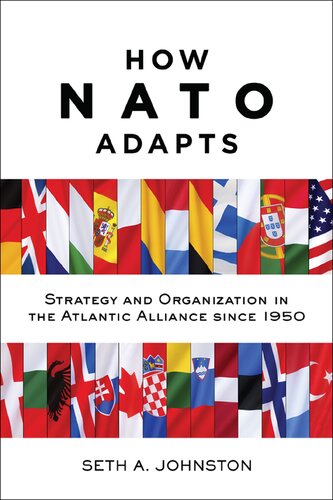

Most ebook files are in PDF format, so you can easily read them using various software such as Foxit Reader or directly on the Google Chrome browser.
Some ebook files are released by publishers in other formats such as .awz, .mobi, .epub, .fb2, etc. You may need to install specific software to read these formats on mobile/PC, such as Calibre.
Please read the tutorial at this link: https://ebookbell.com/faq
We offer FREE conversion to the popular formats you request; however, this may take some time. Therefore, right after payment, please email us, and we will try to provide the service as quickly as possible.
For some exceptional file formats or broken links (if any), please refrain from opening any disputes. Instead, email us first, and we will try to assist within a maximum of 6 hours.
EbookBell Team

5.0
48 reviewsToday’s North Atlantic Treaty Organization, with nearly thirty members and a global reach, differs strikingly from the alliance of twelve created in 1949 to "keep the Americans in, the Russians out, and the Germans down." These differences are not simply the result of the Cold War’s end, 9/11, or recent twenty-first-century developments but represent a more general pattern of adaptability first seen in the incorporation of Germany as a full member of the alliance in the early 1950s. Unlike other enduring post–World War II institutions that continue to reflect the international politics of their founding era, NATO stands out for the boldness and frequency of its transformations over the past seventy years.
In this compelling book, Seth A. Johnston presents readers with a detailed examination of how NATO adapts. Nearly every aspect of NATO―including its missions, functional scope, size, and membership―is profoundly different than at the organization’s founding. Using a theoretical framework of "critical junctures" to explain changes in NATO’s organization and strategy throughout its history, Johnston argues that the alliance’s own bureaucratic actors played important and often overlooked roles in these adaptations.
Touching on renewed confrontation between Russia and the West, which has reignited the debate about NATO’s relevance, as well as a quarter century of post–Cold War rapprochement and more than a decade of expeditionary effort in Afghanistan, How NATO Adapts explores how crises from Ukraine to Syria have again made NATO’s capacity for adaptation a defining aspect of European and international security. Students, scholars, and policy practitioners will find this a useful resource for understanding NATO, transatlantic relations, and security in Europe and North America, as well as theories about change in international institutions.